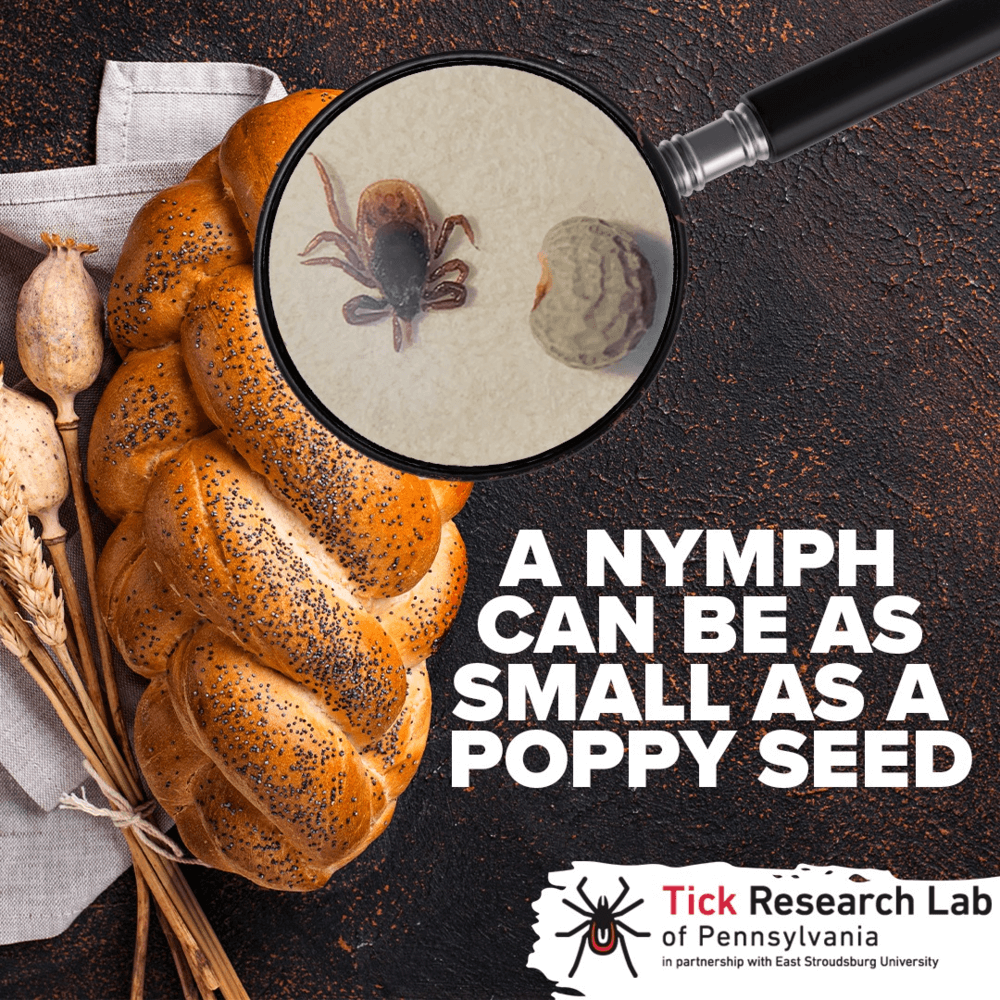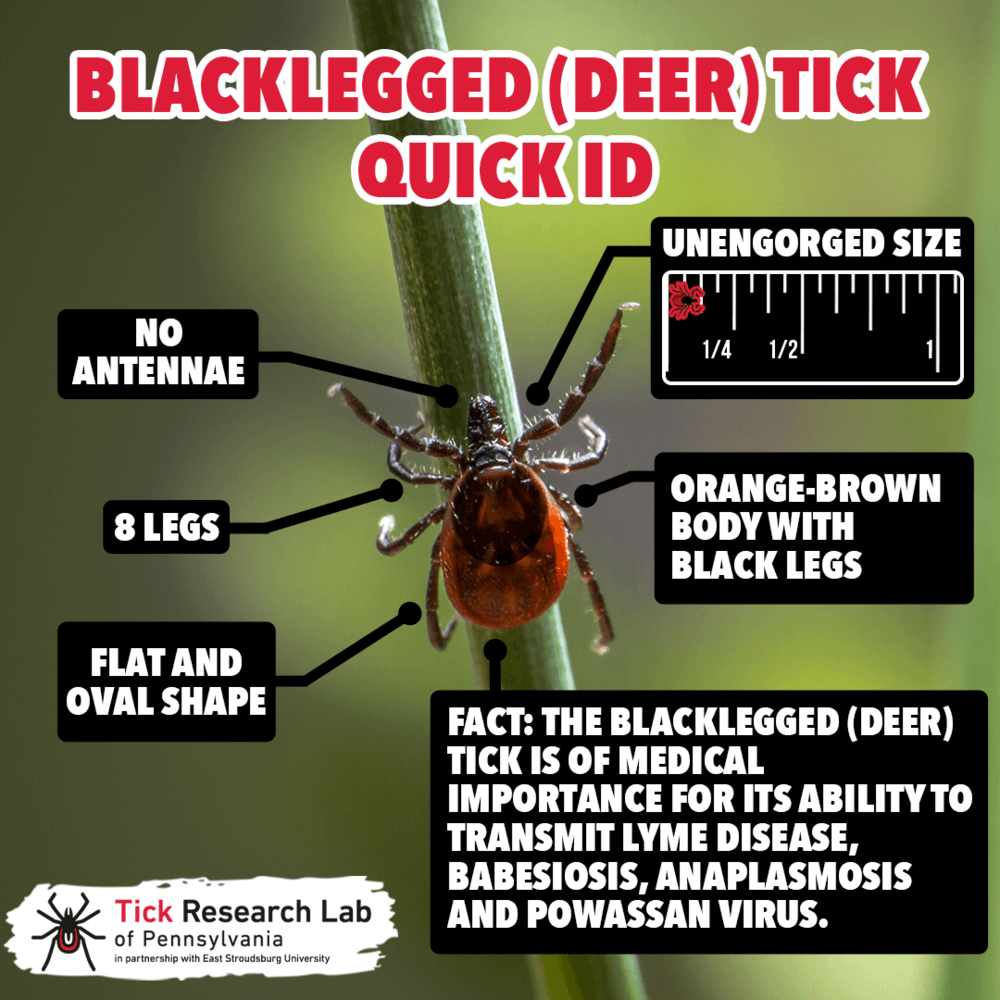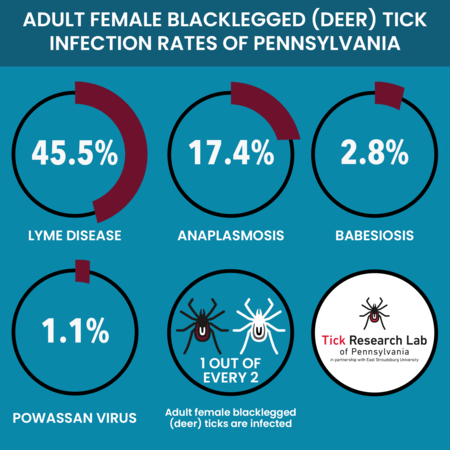The more you can learn about ticks, the better equipped you will be to avoid encounters and potential illnesses associated with tick bites. Learning about the tick lifecycle, for example, will help you in identifying ticks and understanding your risk of infection.

Tick lifecycles can last upwards of two to three years. They consist of the following four stages: egg, larva, nymph and adult. In order to progress to successive life stages, ticks must successfully feed on a host (also known as having a blood meal). Hosts can include mammals, birds, reptiles, and amphibians. Some ticks like the Brown Dog Tick (Rhipcephalus sanguineus), a common vector of Rocky Mountain Spotted Fever, prefer to feed on the same host at each lifecycle stage whereas other ticks like the Blacklegged (deer) tick (Ixodes scapularis), the vector of Lyme disease, may choose a different host at each life stage. In the event of a tick bite, accurate identification of the tick’s species and its current lifecycle stage can provide significant aid in assessing risk and the subsequent actions needed.
The Life Cycle of a Blacklegged (Deer) Tick
Stage 1: Egg
Tick eggs are often laid in the spring after female ticks complete their two to three-year life span. Eggs are often brown and red in color and appear to be translucent. One tick can lay thousands of eggs. While ticks need to detach before laying eggs (and therefore can’t lay eggs directly on a host), eggs can be found under leaf litter, leaf brush and other warm, soft places outside.
Stage 2: Larva
In the summer, tick eggs hatch into six-legged larvae. Although rare, larval ticks may be infectious as some tick-borne illnesses can be transmitted from an adult tick to the eggs, which is called transovarial transmission. However, ticks mainly become infectious once they absorb a pathogen from one of their hosts. For example, during the larvae stage, one of the most common tick host is the white-footed mouse, a mammal which is known to carry Lyme disease causing bacteria (Borrelia burgdorferi). The white-footed mouse is also referred to as the reservoir host of Lyme disease, meaning that this mammal is able to transmit the bacteria to a feeding tick. If instead, the larvae feed on other hosts like racoons and squirrels which are not capable of transmitting the disease, the larvae will not yet become infectious. If a larval tick becomes infected with Lyme disease or another tick-borne illness, they will maintain the infection throughout the remainder of their life which is referred to as transstadial transmission. When the larvae are finished feeding on their first host, they’ll fall to the ground and begin molting as they transition to the next lifecycle stage – nymphs.
Stage 3: Nymph


Between the fall and spring, larvae will molt into nymphs. At this stage, they have eight legs and are most active when the weather is above 37 degrees Fahrenheit (though tick checks should still be performed year-round when traveling through known tick areas). During the colder months, nymphs will sit dormant under leaf litter, snow cover and shaded areas. When the weather warms, nymphs will begin questing behavior in order to locate their next host. If already infected, nymphs can transmit Lyme disease to their new host, or nymphs may become infected with a tick-borne disease by feeding on an infected reservoir host, or even contract a second tick-borne disease making them co-infected with various pathogens. In fact, since April 2019, 7,002 Nymph Blacklegged Ticks were tested for Lyme disease and a total of 31.1% (2,177) tested positive. Find more Tick Testing Data and statistics here – https://www.ticklab.org/statistics.
Once attached to their host, nymphs will feed for four to five days before dropping off to start transitioning into their final life stage – an adult.
Stage 4: Adult


During the fall, when the nymph falls off its host and transitions into an adult, it will look for its third and final host. During the nymph and adult phases, ticks can seek out humans as their hosts and possibly transmit disease(s). In fact, in Pennsylvania, one out of every two Adult Female Blacklegged (Deer) Ticks are infected (45.4% carry Lyme Disease; 17.4% carry Anaplasmosis; 2.8% carry Babesiosis; and 1.1% carry Powassan Virus). Although the prevalence of tick-borne illnesses can range upwards of 65% in some counties of PA, transmission from tick to host can vary from as fast as 15 minutes for Powassan virus to 36-48 hours for Babesiosis. Lyme disease transmission can occur as early as 18-24 hours of a tick being attached to a host.
During winter, adult ticks unable to locate hosts retreat underneath leaf litter or other surface vegetation, becoming inactive in temperatures below 37 degrees Fahrenheit. With the exception of unusually warm winters, adult ticks will begin to become active again in late February / early March, when they will resume their quest for a bloodmeal.
After feeding on their final host, and depending on the weather and time of year, ticks will look to begin mating. Males typically die after mating with a female, and females will reproduce by laying thousands of eggs during the spring and die shortly thereafter, thereby completing the tick lifecycle.
Always remember to keep a lookout for ticks at each stage of their lifecycle so you’re best equipped to avoid tick bites and to protect yourself, your family, your friends and pets.
https://www.ticklab.org/statistics
https://www.aldf.com/deer-tick-ecology
https://www.cdc.gov/ticks/life_cycle_and_hosts.html
https://www.medexpress.com/blog/better-health/tick-life-cycle.html
